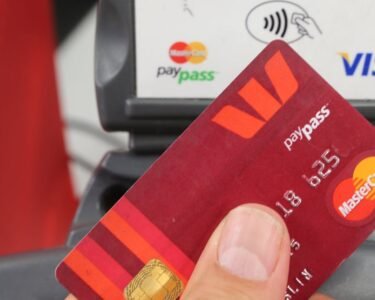Many banks and card providers have introduced new rules, such as minimum spends to activate complimentary lounge access and reducing the number of free lounge visits in a given timeframe.
While most high-end credit cards offer unlimited lounge access, they are out of reach for many due to their income requirement, fees, and spending threshold. Lifetime-free cards, which are more suitable for most moderate spenders, have preconditions, such as minimum spending in a given month, and other conditions as prerequisites to activate the lounge access.
Mint asked credit card experts which easy-to-get credit cards with no annual or joining fees (lifetime-free, or LTF, cards) are the best if one is primarily looking for airport lounge access.
Cards with unlimited lounge access
Federal Bank’s Scapia credit card unlocks unlimited domestic lounge access after ₹10,000 is spent in the previous billing cycle. It is a travel-focused credit card that, until February 2025, had to stop onboarding new customers as the country’s banking regulator asked the bank to stop onboarding new co-branded credit card clients. After a brief pause, Scapia is now back in the market with its flagship travel card.
What sets the Scapia card apart is that it offers access not only to airport lounges but also to a variety of premium experiences beyond them, like coffee shops, restaurants, spas, and retail outlets inside the airport.
Here’s how it works: A minimum spend of ₹10,000 is required in the previous billing cycle to activate a feature called ‘Airport Privileges’ in the Scapia app. For the Rupay variant of the card, a minimum spend of ₹15,000 is required to activate this feature. Once the minimum spend is completed, the airport privileges will be activated from the next billing cycle (month).
If lounge access is inconvenient due to long queues or crowding, Scapia users can redeem benefits outside. In India’s top six cities—Bengaluru, Mumbai, Delhi, Chennai, Kolkata, and Hyderabad—they can spend up to ₹1,000 on dining, coffee, shopping, or spa services. In other cities, the limit is ₹500.
“Sometimes, the queue outside the airport lounge is just too long and not worth the wait. With a Scapia card, you have the flexibility to skip the crowd and grab a meal at places like Starbucks instead—and still get it reimbursed in Scapia reward points,” said Ajay Awtaney, credit card expert and founder of LiveFromALounge.com, a credit card and aviation blog. The credit card expert said this is the only card he knows that offers services outside lounges.
To be clear, Scapia users can avail any one of the eligible services once within a 24-hour window. For example, a traveller flying from Mumbai to Delhi can use the benefit at both airports on the same day. However, if they return to the Delhi airport again within the same 24 hours, they won’t be able to use the benefit the second time.
The reimbursement will be in the form of Scapia coins, which can be used to make in-app purchases, said Anil Goteti, founder and chief executive, Scapia Technology Pvt. Ltd.
He said domestic lounge access is available in 34 airports, and the other airport privileges are currently available in 77 airports. However, international lounge access is not provided.
This card offers forex transactions at no extra cost for international travellers, although they will not be rewarded with Scapia coins for such transactions.
The card rewards users with a 2% return on regular spends and 4% on travel spends in rupee terms. These coins can be redeemed for flights, hotels, and other travel bookings directly within the Scapia app.
Cards with no spending requirement
IndusInd Bank’s Tiger credit card,launched by BajajCapital Ltd in association with Tiger Fintech Pvt. Ltd is another LTF card that offers lounge access.
Awtaney said this card is among the few LTF cards that offer lounge access without any spending requirement.
The card offers access to domestic lounges twice every quarter (eight times a year) and international lounges twice every year. International lounges are accessed via Priority Pass, which otherwise costs $35 per access.
“I’ve not seen any other cards give this much complimentary lounge access as far as a free card is concerned,” said Niraj Dugar, a chartered accountant, credit card expert, and the founder of the financial planning and distribution firm, Holistic Prime Wealth. “The card has a 1.5% forex markup, which is not bad.”
The co-branded credit card also gives a complimentary one golf lesson every quarter and a movie ticket up to ₹600 every six months onbookmyshow.com, among other benefits.
Credit card experts said Scapia’s reward system, which gives 2% back on regular spending and 4% on travel spending, makes it an attractive proposition. However, the reward system for the IndusInd Tiger card isn’t that attractive.
Cards with a low fee
Apart from LTF cards, some low-annual-fee credit cards offer generous lounge access and come with spend-based fee waiver options.
One good option is the BOBCARD Eterna card, which provides unlimited lounge access and carries a joining and renewal fee of ₹2,950 (inclusive of 18% goods and services tax). However, there are ways to avoid these charges—the joining fee is reversed if ₹25,000 is spent within the first 60 days, while the renewal fee is waived on spending ₹2.5 lakh in a year.
Additionally, the card offers 10,000 reward points as a welcome bonus, equivalent to ₹2,500 in cashback. So, even if the cardholder is unable to meet the joining fee waiver criteria, the value of the reward points nearly offsets the cost.
What should you do?
Abhishek Kumar, a registered investment advisor and the founder of SahajMoney said that while LTF credit cards like Scapia Travel Card and IndusInd Tiger appear attractive with lounge access and no annual fees, consumers must understand that ‘lifetime-free” doesn’t mean cost-free. Both cards require consistent monthly spending to maintain key benefits—Scapia needs ₹10,000-15,000 monthly for lounge access, while various transactions attract 1% convenience fees.
He added that such an offering is often part of a card provider’s strategy to change consumer behaviour through a loss leader strategy, where they subsidize one form of consumer spending so that they can make more money from other consumer spending through merchant discount rate or inability to pay credit card bills on time.
“Hidden charges could include 42-45% annual interest rates if one misses a credit card payment, late payment fees up to ₹1,300, and extensive reward exclusions for categories like rent, fuel, and digital wallets. Most importantly, banks can modify or devalue benefits anytime without notice, transforming today’s attractive offers into tomorrow’s disappointments,” he said.




